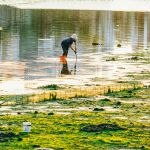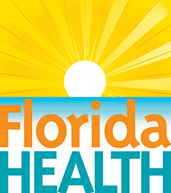It's a New Day in Public Health.
The Florida Department of Health works to protect, promote, and improve the health of all people in Florida through integrated state, county, and community efforts.
Aquatic Toxins in Florida
Contact: Florida Health
- 850-245-4444
- health@flhealth.gov
-
Mailing Address
Florida Health
4052 Bald Cypress Way
Tallahassee, FL 32399
 Florida’s waterways are an important part of the state’s environment and economy, but they can be affected by toxins released during harmful algal blooms (HABs). The Florida Department of Health explains the nature of these toxins, their potential impacts on public health and the environment, and offers safety recommendations.
Florida’s waterways are an important part of the state’s environment and economy, but they can be affected by toxins released during harmful algal blooms (HABs). The Florida Department of Health explains the nature of these toxins, their potential impacts on public health and the environment, and offers safety recommendations.
What You Need to Know to Stay Safe in Florida:
- What Are Aquatic Toxins?
- Health and Environmental Hazards
- Staying Safe & Informed
- Additional Resources
- Red Tide: Caused by the alga Karenia brevis, red tide produces brevotoxins that may irritate the respiratory system and affect marine life.
- Blue-Green Algae (Cyanobacteria): These freshwater blooms can produce toxins that pose risks to humans, pets, and wildlife when ingested or when there is skin contact.
- Health risks: Breathing airborne toxins can cause respiratory irritation, especially for individuals with asthma or allergies. Skin contact with affected water may cause rashes, and consuming contaminated seafood can lead to gastrointestinal issues.
- Environmental impact: Aquatic toxins can cause fish kills, degrade water quality and disrupt marine ecosystems, leading to economic and ecological challenges.
- Stay Informed: Monitor updates from agencies such as the Florida Department of Environmental Protection and NOAA’s Harmful Algal Bloom Forecasts.
- Avoid Affected Areas: Refrain from swimming, fishing, or boating in waters that show visible blooms or emit strong odors. Keep pets and children away from these areas.
- Follow Health Advisories: Observe guidelines related to seafood consumption and water contact during bloom events.
Protecting Florida’s Waterways
Florida’s waterways are essential to the state’s environment and economy and protecting them requires collective action. Staying informed about harmful algal blooms, recognizing health risks and following safety advisories help safeguard public health and marine ecosystems. By adopting responsible practices and using trusted resources, individuals can help preserve Florida’s water quality and ensure these natural treasures remain accessible for future generations.
Disclaimer: The links and content provided on this page are for informational purposes and your convenience. The Florida Department of Health (DOH) does not endorse, approve, or guarantee the products, services, or opinions offered on external websites. Furthermore, the DOH is not responsible for the accuracy, content, or availability of these external sites. For questions or concerns, please contact the external site directly.



Connect with DOH